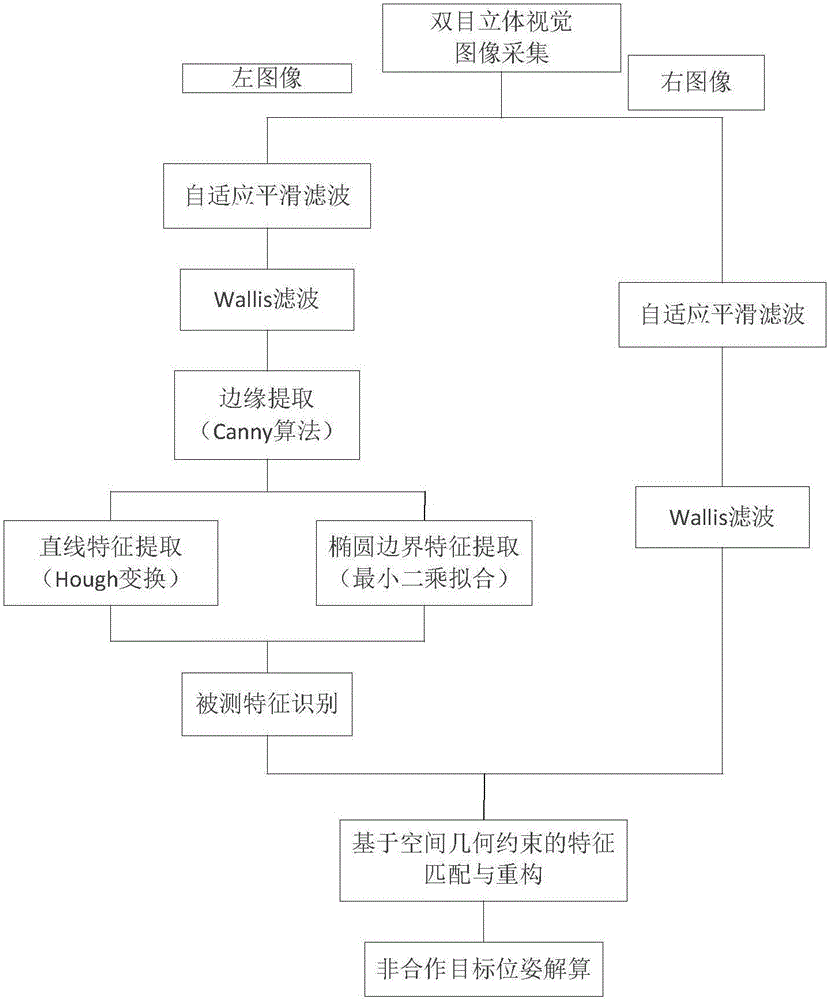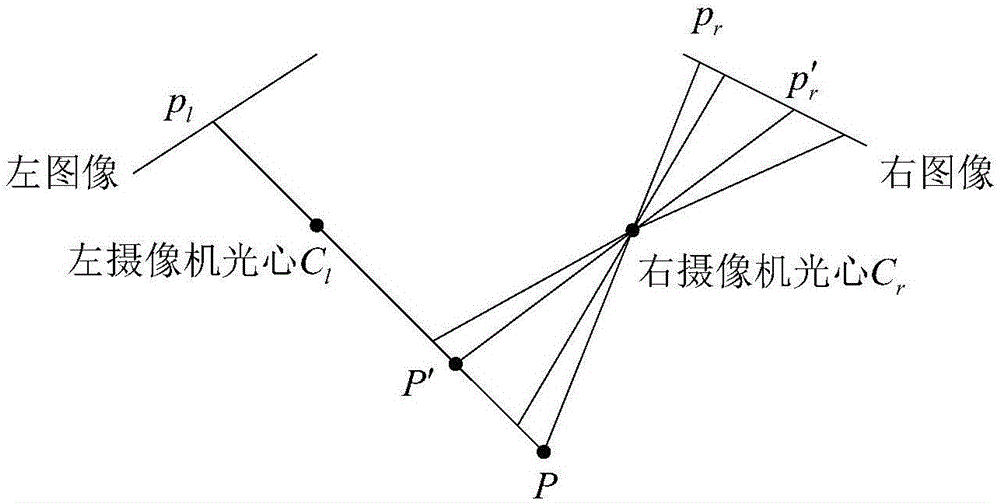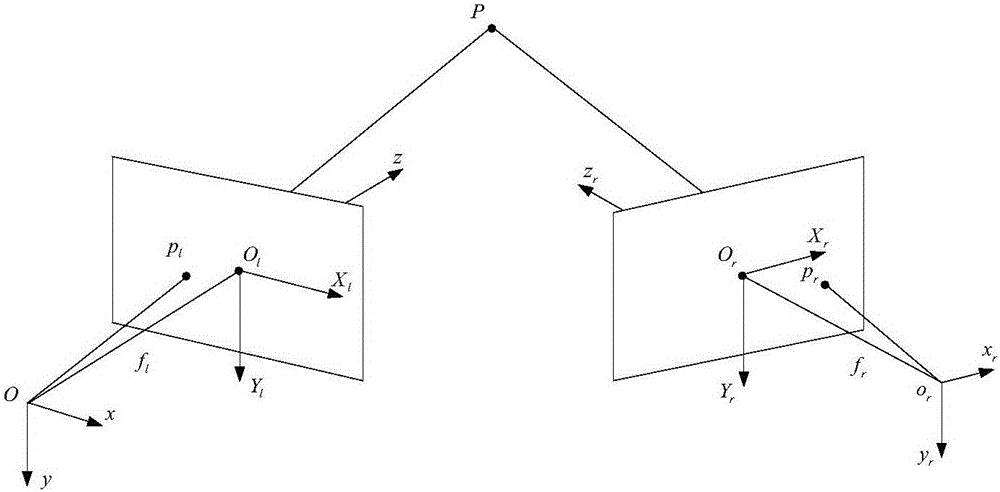Spatial non-cooperative target pose measurement method based on stereoscopic vision
A non-cooperative target, stereo vision technology, applied in photo interpretation, image data processing, instruments, etc., can solve problems such as image degradation and image processing algorithms, and achieve the effect of reducing complexity, solving image degradation problems, and improving accuracy
- Summary
- Abstract
- Description
- Claims
- Application Information
AI Technical Summary
Problems solved by technology
Method used
Image
Examples
Embodiment Construction
[0038] The present invention will be described in detail below with reference to the accompanying drawings and examples.
[0039] The spatial non-cooperative target pose measurement method based on stereo vision processes the images synchronously collected by the left and right cameras, and calculates the relative position and posture parameters of the non-cooperative target. The main steps are as follows:
[0040]Step 1. Image preprocessing: perform adaptive smoothing filtering and Wallis filtering on the left and right camera images respectively to reduce noise interference and enhance image feature information.
[0041] The adaptive smoothing filter algorithm is an iterative algorithm, assuming that the number of iterations is T, the basic iterative steps are:
[0042] (a) Determine the window Q with each image point I(x, y) in the image I as the center, and calculate the gradient of the image point I(x, y), as shown in the following formula:
[0043]
[0044] (b) Calcu...
PUM
 Login to View More
Login to View More Abstract
Description
Claims
Application Information
 Login to View More
Login to View More - R&D
- Intellectual Property
- Life Sciences
- Materials
- Tech Scout
- Unparalleled Data Quality
- Higher Quality Content
- 60% Fewer Hallucinations
Browse by: Latest US Patents, China's latest patents, Technical Efficacy Thesaurus, Application Domain, Technology Topic, Popular Technical Reports.
© 2025 PatSnap. All rights reserved.Legal|Privacy policy|Modern Slavery Act Transparency Statement|Sitemap|About US| Contact US: help@patsnap.com



